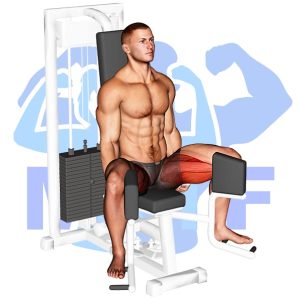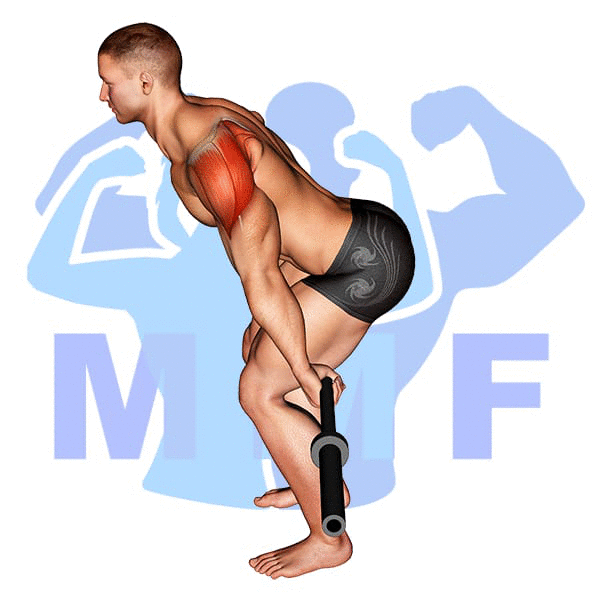Many people struggle with strengthening their hips and attaining the perfect hourglass figure. One exercise that can help target and tone the hip muscles is the cable hip adduction. The reason many of us have weak hips is due to our sedentary lifestyles. Sitting at a desk or in front of a television for extended periods of time can lead to the weakening and atrophy of our hip muscles. However, with the proper exercise routine and an understanding of the cable hip adduction, you can effectively strengthen and tone those important muscles. In this post, we’ll go over the benefits and techniques of cable hip adductions and show you how to incorporate them into your fitness routine for maximum results.
Cable Hip Adduction Summary
- Primary Muscles: Hip Adductors
- Secondary Muscles: Gluteus Maximus – and Gracilis, Pectineus
- Equipment: Cable Machine with Ankle Strap
- Mechanics Type: Isolated
- Force: Pull
- Utility: Auxiliary

Cable Hip Adduction Instructions
- Start by standing in front of a low pulley facing to one side.
- Attach a cable cuff to your ankle closet to the machine.
- Step out away from the weight stack with a wide stance and grasp the ballet bar.
- Stand on your far foot and allow the cable to pull your near leg toward the low pulley. Now, move your close leg just in front of your far leg by adducting (pulling to the center) your leg.
- Allow the pulley to pull your leg up and away and repeat.
- Repeat a set with your opposite leg by turning around and connecting your other leg.
Video Tutorial
Cable Hip Adduction Muscles
Target (Agonist)
- Hip Adductors
Synergists
- Gluteus Maximus – Lower Fibers
- Gracilis
- Pectineus
Dynamic Stabilizers
- None
Stabilizers
- Erector Spinae
- Gluteus Medius
- Gluteus Minimus
- Obliques
Antagonist Stabilizers
- None

Benefits of Cable Hip Adduction
The Cable Hip Adduction exercise is an effective way to target the hip adductors, a group of muscles located on the inner thigh. This exercise helps to strengthen the hip adductors, which are responsible for bringing the legs inward toward the midline of the body. This movement is important for everyday activities such as walking, running, and jumping. Additionally, strengthening the hip adductors can help to improve balance, stability, and coordination. Furthermore, when performed regularly as part of a strength training or fitness routine, this exercise can help to tone and shape the inner thigh muscles, providing a more aesthetically pleasing appearance.
Tips for Performing Cable Hip Adduction
Your at the right place if you’re trying to advance your cable hip adduction performance. Using these suggestions can allow you to maximize the advantages of this amazing workout. You can strengthen your adductors muscles, and even reduce your risk of developing an injury. So let’s start right now and discover what these tips may accomplish for you.
- Stand with your feet shoulder-width apart and grip the cable handle: This will ensure you have the proper form and balance to perform the exercise correctly, as well as providing a stable base from which to work from.
- Squeeze your glutes and core muscles: Doing this will help to stabilize your body and protect your back from any strain during the exercise, allowing you to get the most out of it.
- Move slowly and focus on your form: Slow and steady movements will ensure that you are doing the exercise properly, maximizing its benefits and avoiding any potential injuries.
Benefits and Tips Video
Frequent Mistakes To Avoid
Staying away from errors can be the difference between a successful training session and an injury when executing cable hip adduction. Additionally, in order to maximize your benefits of the exercise, proper form is required. Through avoiding frequent mistakes, you may improve your ability to achieve your desired results. But relax, it’s not quite as difficult as it might seem. By knowing the mistakes to avoid and taking the appropriate actions, you can execute the exercise safely and effectively. Let’s start by avoiding these standard errors and add this exercise to your exercise regimen.
- Not using proper form: Not using proper form can lead to improper movement, which can result in injury and poor results. It is important to ensure that you are using the correct technique when performing the Cable Hip Adduction.
- Not increasing the weight: Sticking with the same weight can lead to plateauing, resulting in no progress and a lack of results. As your fitness level increases, it is important to add weight to the exercise in order to challenge your muscles and continue to progress.
- Not allowing adequate rest periods: Not allowing your body to rest between sets can cause fatigue and reduce performance, leading to a decrease in results. It is important to give yourself adequate rest between sets in order to maximize results from the Cable Hip Adduction.
Find More Cable Exercises Here
Variations and Complementary Exercises
In order to maximize your workout, it is important to mix up your exercises and switch between different exercises that work similar muscles. Below are a list of variations, complementary, or alternative exercises for the exercise Cable Hip Adduction.
Lever Seated Hip Adduction (Machine)

The Lever Seated Hip Adduction (Machine) is a great alternative or complementary exercise to the Cable Hip Adduction. This machine works the adductor muscles of the hip, which are important for stabilizing the hip joint. The Lever Seated Hip Adduction is also a great way to build strength in the legs, as well as improve balance and coordination. It can also be used to improve hip mobility and range of motion. This machine is easy to use and can be adjusted to different levels of difficulty, making it suitable for a variety of fitness levels.
Barbell Sumo Squat

Barbell Sumo Squat is a great alternative or complementary exercise to Cable Hip Adduction. This exercise works the inner thighs and glutes, which can help increase strength and stability. It is a multi-joint exercise that involves pushing the knees outward as you squat down and pushing your hips back as you come up. This exercise can be done with heavy weights for more of a strength focus, or lighter weights for increased muscular endurance. Barbell Sumo Squat can help increase the range of motion in your hips, improve balance and coordination, and add variety to your workout.
Sled Leg Wide Press

Sled Leg Wide Press is an effective alternative or complementary exercise to Cable Hip Adduction. It is a great way to increase the range of motion and improve hip stability, while also increasing the challenge of the exercise. The exercise is performed by placing a weight plate on the sled and then stepping out with one foot and pressing it back. This movement targets the gluteus medius and minimus muscles, as well as the adductor muscles of the hip, to provide extra stability and strength in the hips. In addition, the added resistance from the weight plate increases the intensity of the exercise, making it ideal for athletes looking to build strength and power in their lower body.
Check Out These Top Cable Exercises
Find More Legs Exercises Here
Opposing Complementary Exercises
To further enhance the results of the Cable Hip Adduction exercise, there are other exercises that can be done to strengthen the opposing muscle groups. These exercises will help to improve balance and stability by working the muscles in the opposite direction. Below are a few exercises that can be used to complement the Cable Hip Adduction exercise.
Lever Seated Hip Abduction (Machine)

The Lever Seated Hip Abduction machine is a great complement to the Cable Hip Adduction exercise as it works the opposing muscle group. This machine involves sitting in a seat with a lever attached to the outside of each leg. The user moves the lever outward, away from their body and then back in, while keeping the feet flat on the floor. This exercise targets the gluteus medius, the muscle group responsible for hip abduction and is a great way to build strength and stability in the hips. By working this opposing muscle group, it helps to balance out and further develop the muscles used in Cable Hip Adduction, creating a more balanced hip musculature.
Dumbbell Single Leg Deadlift

The Dumbbell Single Leg Deadlift is a great exercise to compliment the Cable Hip Adduction. It focuses on the posterior chain, specifically the glutes and hamstrings, which are the opposing muscle group to the adductors that are targeted with Cable Hip Adduction. The unilateral (single leg) aspect of this exercise also provides an additional challenge to stability and core control, making it a great addition to any lower body routine.
Dumbbell Straight Leg Deadlift

The Dumbbell Straight Leg Deadlift is an excellent complementary exercise to the Cable Hip Adduction. This exercise strengthens the posterior chain muscles of the lower body, such as the glutes and hamstrings, which are the opposing muscle group to the adductors activated in the Cable Hip Adduction. This exercise also works the core muscles, helping to build stability and balance. The Dumbbell Straight Leg Deadlift should be performed with correct form and a slow, controlled tempo to ensure proper activation of the target muscles and avoid any potential injury.
Tone Your Inner Thighs Today!
If you’re looking to sculpt and tone your inner thighs, cable hip adduction is an effective exercise that can help achieve your goals. By using resistance cables, you can target the adductor muscles on the inner thigh, working to strengthen and tone this area. Not only can this lead to a more defined look, but it can also improve overall lower body strength and stability. Incorporating cable hip adduction into your fitness routine can give you noticeable results, so start working on those inner thighs today!
References: Wikipedia | ExRx.net | PubMed.gov | Comprehensive List of Legs Cable Exercises




